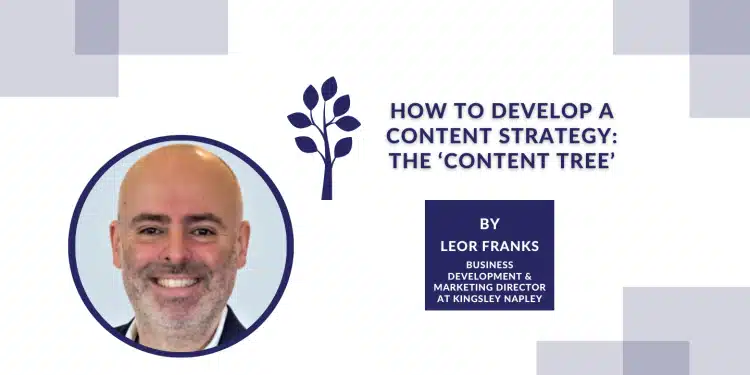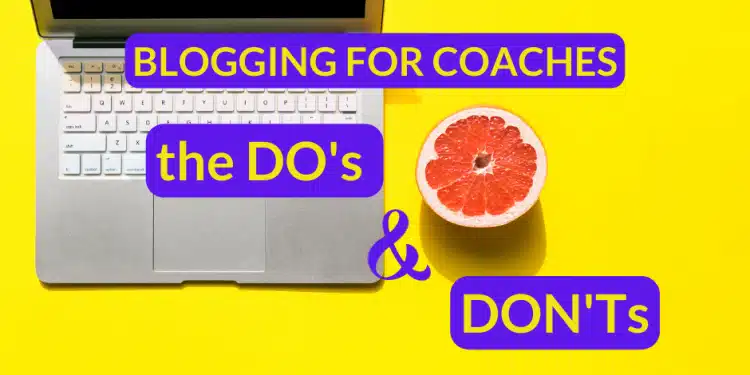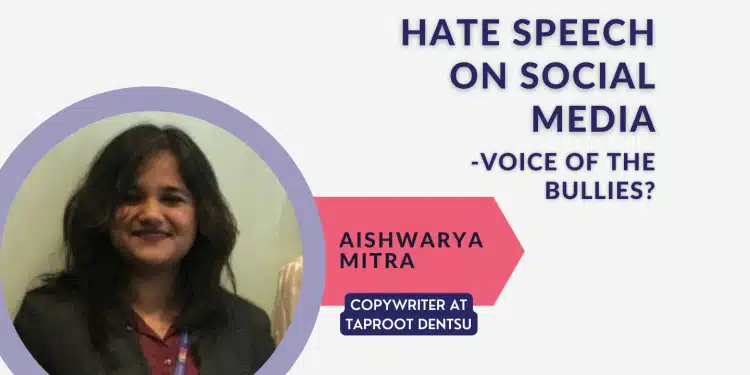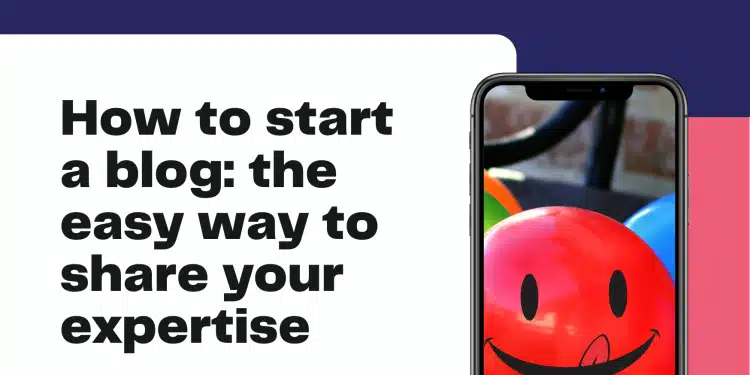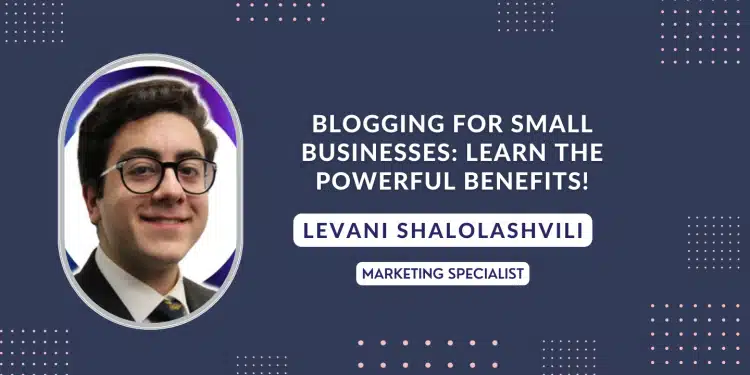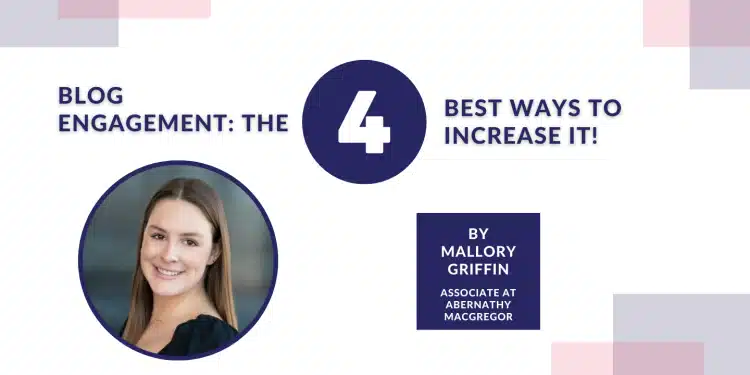There are many guides to starting your own blog out there. In this one, we focus on making how to start a blog easy and hassle-free, letting you focus on what you love the most – exploring and sharing your passions!
The hard way, and the easy way, to blog!
We can let you in on a little secret – it’s possible to spend weeks (if not months) building your own website to host your blog, learning the art and science of search engine optimization, curating your website, and managing social media channels. But all that is in no way required to have a successful blog!
This in-depth guide provides everything you need to know to create a blog that achieves your specific goals, without all the hassle. We’ve focused this guide on the easy ways to blog, though the great tips below will help anyone looking to start one as well as even some serious, veteran bloggers!
Setting clear goals in starting a blog
When thinking about starting blogging, it’s hugely important to create clear goals on what you want your blog to achieve. Matching those goals to your approach means you focus on what blogging does for you, not anyone else. That may be about simply sharing what you love, or creating engaging interactions with others in your niche!
Spending some time setting goals about what you want to achieve with your blog will make this easy:
- Are you looking to share your knowledge?
- Influence the debate on a particular topic?
- Find and interact with others who share your interests?
- Earn some income on the side?
- Or, perhaps make it into a career?
Jot down your goals quickly, and while you’re doing this, see how you feel about them and if they really motivate you. That gut check is likely to give you a good sense of what will work for you or not. Depending on your chosen goal, different approaches will help you succeed – there are easier and harder ways, so read on!
The full range of blogs – from hobby pages to passionate sermons to serious money makers
Blogs can be very simple to very sophisticated, and everything in between! There are millions of writers out there who post articles here or there. Many of them achieve their goals this way, and many don’t. The content ranges from short, chirpy posts to in-depth articles about arcane topics to emotional missives on today’s key issues.
Some blogs have massive amounts of web traffic, and others serve very specific niches – and both can have a huge influence! Many blogs include “affiliate” marketing links, where they earn commission on sales. While some blogs earn large amounts, many earn very little. As a result, it’s really important to have your goal in mind so you can cut your cloth accordingly.
The easy way to share your views and create engagement
At Expert Circle we focus on enabling people who have great expertise to share their views and create engagement with others, and many of our members want to know how to start a blog without building an entire website.
More broadly, this guide focuses on the different straightforward and easy ways to create a blog that:
- Propagates the author’s views on key topics
- Allows others who share the author’s interests to engage deeply with it
- Does not require advanced technical skills
There are 8 key steps to starting your own blog, and we will cover each:
- Explore your passions: brainstorm blog topics that interest you
- Prioritize to choose your preferred blog niche
- Create a quick plan of some initial content
- Start writing – the crucial step to starting your own blog!
- Add the bells and whistles you need to be successful (learn how to do this)
- Determine how and where you want to distribute your blog
- Hit publish and start sharing!
- Keep sharing, and keep writing – how to stay motivated with your blog
Step one: explore your passions: brainstorm blog topics that interest you
Want to know the number one success criterion for blogging? You have to be passionate about what you are blogging about! Whatever your goal, having the motivation to achieve it comes from a strong interest in your chosen topic. 
So while there aren’t many secrets to this step, it’s crucially important. Start jotting down some things you love, and things you love to share. Many people know that “sleeping on” important decisions helps to get good outcomes, and we recommend that for this one! Spending time on this up-front will pay dividends later on.
Step two: prioritize to choose your preferred blog niche
Once you’ve had some good shut-eye, come back to your list. Do any stick out as “the one” you want to use to start your blog? Any that you just don’t get a good feeling about? Do some quick triage and aim to have 2-3 front runners left.
Now, there are a few ways you can proceed. Going with your gut is a great way to choose if your goal is sharing what you are passionate about. On any topic, there are great ways to get your views in front of interested people. Some interesting or incisive writing and the tips later in this guide will ensure that. For most new bloggers, this will meet their goals!
A few pro tips for those looking for more
However, if you have highly specific goals (getting thousands of hits, say) then we recommend some additional research on your shortlist. First, type a search in Google that you think someone interested in your topics would try. Then, at the bottom of the screen, Google will suggest related searches, the shorter of which you should capture. Run those through WordTracker or SearchVolume.io, and see how much demand is there. Topics with around 10,000 hits per month or more will give you the chance to generate significant traffic.
So where does this leave you with your shortlist of topics to start your blog? If you are all about exploring and expanding upon your passion, go with your gut and choose your favourite topic!
If you are looking for scale, choose something that more people are already interested in so you can piggyback (and ideally is also an interest of yours!).
Step three: create a quick plan of some initial content
We’re pretty sure that with your level of passion, you’ve had your head racing with potential blog topics! Even so, and armed with your chosen topic, we recommend you jot down 4-5 initial blog ideas. With this, make sure you can imagine yourself writing on those topics. Listen to your instincts – do they resonate with what you like?
Doing this exercise may seem a bit daunting, but trust us, it will pay off rapidly. If you find it easy to do, then well done, you’ve chosen a good topic for you. If more difficult, see if you can work through it with effort. Not every blog is easy, and some of the best ones are not easy to create, so stick with it!
Then, take your topics and sketch out a brief outline of each – just 3-4 bullet points each. You now have the makings of a solid initial content plan to start your blog! Going in to your blogging journey with this in hand provides a good roadmap to keep you on track.
A more advanced tip at this stage: start considering who your ideal audience members for these topics would be. The more you have your audience in mind, the clearer your blog’s writing and the easier to generate followers!
Step four: start writing – the crucial step to starting your own blog!
You’ve made it this far, don’t give up now! Unfortunately, there are millions of blog ideas that have never made it past this point. We genuinely hope you won’t be part of that statistic! And we’ve even structured this guide with a bit of “escalating commitment” to try to nudge you along. (By having you plan your blog before actually writing it!) Even so, it’s now up to you to take the leap and start writing your first blog post.
Choose a topic from the handful you sketched out. Perhaps not your favourite even, but the one that you can almost imagine yourself writing. Get yourself in the right mindset to write.
Choose an inspiring spot – your porch, the local library, wherever. And beyond this, make sure you feel ready to go. While you may feel a bit of anxiety, try to use that nervous energy and channel it into your blog! It can give you real power, and there’s no better feeling than putting it to good use and getting a great result.
Step five: add the bells and whistles you need to be successful
You can find endless technical guides out there that help to optimize your blog. Most of them help you generate free traffic from search engines, which is certainly a good thing. Though keep in mind your goals – sometimes finding the right niche audience will achieve yours with much less effort and technical knowledge! Finding the right platforms to use can solve these issues automatically, and we’ll consider that in step six and beyond.
No matter what your goal is, there are some key elements that are simply good practice with blogging.
- First, draft a clear title that communicates the purpose and content of your blog. Add some “hook” along with that, and people who share your interest will be dying to click on your blog!
- Second, create a clear structure to your article, with defined sections and subheadings that signpost them to readers.
- Third, use keywords throughout your article that refer back to your main topic.
- Fourth, ensure you have enough depth in your blog to make it useful to readers. 300 words is the absolute minimum, and 500-1,000+ will start to get you more traction.
- Fifth, pick an eye-catching image to help viewers understand and choose to read your article!
These are the critical hygiene elements to creating a successful blog. Though of course, the actual content, the thought you’ve put into it, and the writing style matter hugely beyond these!
More about those keywords
What does this thing about keywords mean? Well, search engines use keywords to determine the topic of the article and how “relevant” your content is. While they are fairly good at this within the specifications of their algorithms, none is truly intelligent! So how much you need to pay attention to this depends on the goal for your blog.
But whatever your goal, you do want people to be able to understand your blog easily and follow your arguments. As such, good writing practice does actually hold that you should use clear language and repeat keywords. Related words and synonyms of your keywords also matter here. It’s the old “tell them, tell them again, and tell them what you told them” adage. In other words, repeating keywords is the way to convince your audience and propagate your point of view!
So while search engine optimization (SEO) is to some a “dark art”, it can actually improve your blog’s impact regardless.
Step six: determine how and where you want to distribute your blog
Many “how to start a blog” guides begin with the how rather than the what. Indeed it is important, but we focused on helping you get started actually writing your blog first. We now turn to the question of how and where to distribute it. You certainly want the right people to read it so your views get out there and start shaping the conversation!
There are many ways to distribute a blog, and no one way is right for every blogger, so we’ll present some options and let you decide. We do firmly believe that keeping it simple and easy is best for the vast majority of new bloggers. Focusing on what you do best – creating great content – can be liberating, letting others do the hard work! This is an important decision, and hence this is a longer step, but well worth considering carefully.
Deciding whether to host your own website
The first decision is whether to create and maintain your own website. While there are tools out there today which make it easier than it was, it still isn’t for the fainthearted! You’ll need technical skills, as well as a willingness to research and to monitor and fix problems as they arise. There are a few options that offer free website building, but to use some of the advanced features from this article you will need to pay a minimum monthly fee of roughly $10 to start, and that can go up significantly.
WordPress is a good option to host your own website, though again it does require technical skills. Be sure to choose carefully between WordPress.org and WordPress.com. The former is more sophisticated and has charges, while the latter starts free but then charges for advanced features. There are many other platforms out there, all with pluses and minuses, and we won’t cover them in-depth here.
Making that key decision on how to start your blog depends on your goals – (duh!)
So what does it all mean? Deciding whether to build your own website really comes back to the goals you have for your blog! If you are aiming for thousands of hits and to create a significant income stream, you will want to spend the time, effort, and money to customize your blog and control it to the minutest detail. If your focus is sharing your views and engaging with others who share your interests, a website is not required!
How to create a successful blog the easy way
The great news: there are many ways to have a blog that meets your goals that don’t require technical skills! We will outline the best practices on how to do this and all the options you have. And we focus on the super-easy blogging platforms, and then see how you can use them to share your views!
There are a few key platforms in the easy blogging space. We believe that the big three to consider are Medium, Expert Circle and Tumblr. Each has key strengths and does not require you to build a website. Starting your blog on any of these platforms will give you a great start to achieving your initial goals. The sky’s the limit from there: you may reset your goals later, and you can easily build from these platforms!
The Tumblr platform
Let’s consider Tumblr first. Tumblr offers a cross between a blogging and social media platform and is particularly popular with younger age groups. 18-29 is the sweet spot, and if your chosen niche is relevant for that group, Tumblr is a great option! You can create your blog and share it socially with other members of the platform and beyond. They have about 500 million blogs already, so you can see their immense popularity. Recently they have been acquired by WordPress, and as a result, some features may converge between the platforms.
Expert Circle and Medium
These platforms offer a very easy blogging experience, with the added benefit that they share your blog with their audience. That provides built-in traffic for your work, and could solve all of your blog’s distribution needs! For many bloggers, they are all you need to achieve your goals of creating great content and developing a following.
their audience. That provides built-in traffic for your work, and could solve all of your blog’s distribution needs! For many bloggers, they are all you need to achieve your goals of creating great content and developing a following.
With both Expert Circle and Medium, you can simply sign up and start writing! Both platforms allow you to format your blog posts beautifully and add imagery, videos, and social media. These are great ways to showcase your content.
There are important differences between the two platforms. Medium uses complicated algorithms to recommend stories to their reader, while Expert Circle organizes its content by category, which allows creators on its platform a greater ability to place content in front of others who have a strong interest in it. We are certainly partial to Expert Circles’ approach, and we invite you to read more about it below!
Easy blogging and who “owns” your content
The easy blogging platforms we have been discussing don’t require you to build your own website. That does mean you will post your work on someone else’s site, of course! Fear not, however – you will continue to own your work. While the platforms do have limited rights over your work within the confines of their sites, all you need to do is keep a copy and you can do whatever you want with it from there!
Step seven: hit publish and start sharing!
Step seven is, take a breath, a lot shorter – you’ve already learned how to start a blog! We’ve actually already covered the best practices for using these easy blogging solutions in step five. All you have to do is write some great content that you love, and hit publish!
In addition, there are some great tips about how to use Expert Circle below which will help you get the most out of our exciting new platform. They allow you to share your work with people who share your passions and create great conversations with them!
Sharing your blog on multiple platforms
Now that you’ve published your first blog post or two, use it as much as you can! Share it on your social media channels, and also on the other easy blogging platforms you didn’t end up choosing! Find discussion forums on other platforms that cover your niches such as Reddit and Quora, and post links there. All of these things will drive up traffic to your blog and increase your influence!
Step eight: keep sharing and keep writing – how to stay motivated with your blog
You’ve made it this far on how to start a blog, and so far, so good. Now we don’t want to share too many statistics, but many bloggers lose motivation and end up stopping! But we certainly want you to keep going. As a result, we’ve pulled together some top tips to help keep up your drive.
First, it’s important to keep your goals at the front of your mind. Moreover, managing expectations around this is crucial, as your first few posts may not achieve the level of impact you expected. It takes time for even determined new bloggers to reach a significant audience! Our easy blogging approach is the best way to find your niche sooner, but it still takes time. That’s why we say to keep sharing and keep going. The more you write and share, the more you’ll get noticed! Keep the longer-term goals in mind, and focus on short-term actions and the boosts they give you. You’ll get there if you stay focused!
Second, routines and support networks can really help. Aim to set a schedule that gets you focused on your blog at regular intervals, and make it a sacred time. Sunday afternoon after reading the morning paper? Tuesday evening after dinner? Or a more frequent lunchtime slot every day? Whatever it is, set a realistic goal and stick to it! Adding in time with other bloggers can also really boost your motivation, so get a buddy or create a club.
Third, generate some interaction with your followers. There’s no better motivation than hearing from people who read your posts and have an opinion about them! The easy blogging platforms have comments built in, and the more you share them on social media the more comments you will get. Keep up an active dialog with your followers and it will power you forward. Be sure to check out Expert Circles’ advanced features – you can even jump on a live video discussion with your followers to deepen engagement and really strengthen your connection with them!
Some more pro tips
There are more technical matters to mention here, which can help your blog rank in search results. A lot of this goes back to those algorithms. Be sure you have sprinkled your key phrase fairly regularly throughout the article, including sometimes in your subheadings. Too few mentions will get you penalized as well as too many – it certainly shouldn’t look forced!
Also, now is the time to go back to the keyword research you did in step two. You will have chosen a keyphrase with decent traffic, with lots of searches every month. There are also other similar Google search terms that are related to it. Try to add several of those in your post, which will give you the ability to rank on those terms also.
There are other little tweaks that can help optimize things as well. Aim to use your keyphrase at the beginning of your title, and keep the title to 60 characters in length. Beyond this, you want to add links to external sites, preferably reputable ones with large traffic, and post your blog in other discussion forums, social media, and places that will link back to your blog. The search engines take all of these into account in their rankings!
All of these advanced tips can help take you to the next level when you are starting your blog. If you decide to get really serious, there are reams of detailed guides out there, and to master this art you will need to spend a lot more time with them!



